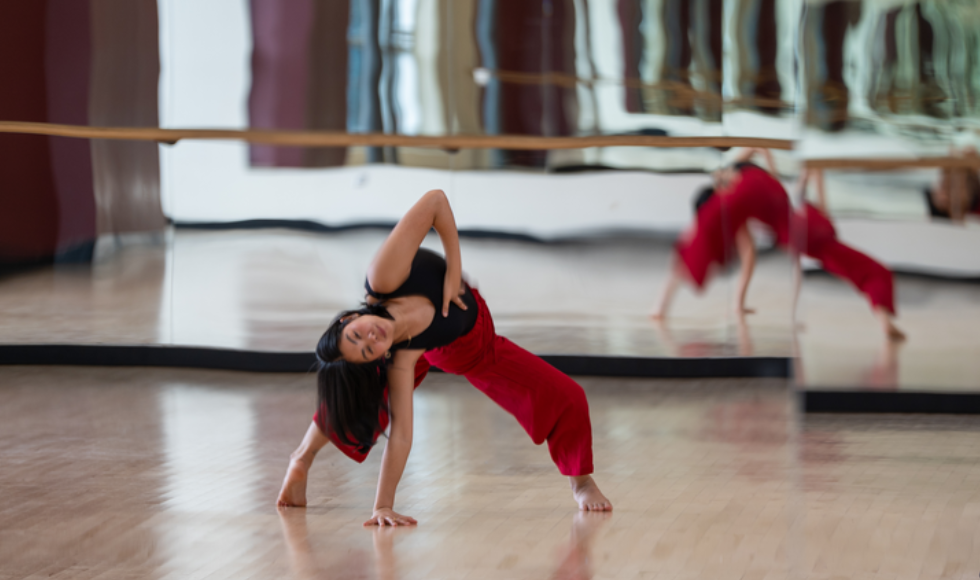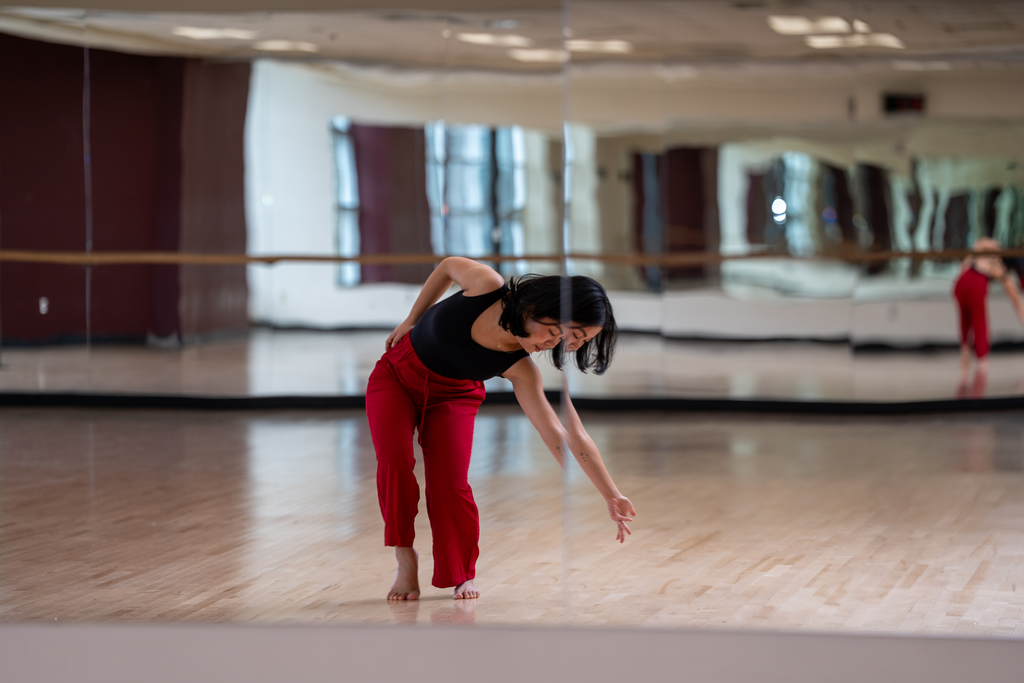Student’s dance thesis explores her family’s stories – and silences

Lee Wo, a contemporary dancer, was interested in using dance performance as a form of research and a way to gather data for her thesis.
How do you share your family’s history when there’s no one to talk to about the past?
The question was on Arts & Science student Soraya Lee Wo’s mind as she worked on her final-year thesis project.
Lee Wo, a contemporary dancer, was interested in using dance performance as a form of research and a way to gather data for her thesis.
She was inspired by a course in Artsci, theatre inquiry, where the class discussed art as a tool for activism, and a 2023 performance by Hamilton dance company Aeris Körper, entitled ‘Prospects,’ where they asked the audience questions as part of the show.
With the support of her supervisor, anthropologist Yana Stainova, she decided to focus the dance on the themes of migration and reclaiming identity.
“That’s something that felt close to me, as my family is mixed race… my parents are from Trinidad, but racially, coming from a bunch of different places kind of in various generations before my parents,” Lee Wo said.
One of the storytellers in her family was her paternal grandfather, who had some of the best stories, Lee Wo said. He was dealing with dementia, and as the disease progressed, “we kind of saw these stories go further and further back into history, which I thought was really interesting.”
After he passed away in June 2024, Lee Wo was inspired to look into her own family’s history and migration stories for her project.
“With his passing, I was thinking a lot about the idea of reclaiming these things and kind of bringing them back,” Lee Wo said. “I think because I was grieving, I was trying to cling onto something in that way.”
In September, she started with a plan to investigate her familial migration stories and choreograph a dance about them, with a post-performance discussion.
She planned to interview her parents and family members. But as the interviews drew near, she realized that her parents didn’t know any more than she did, because there were certain topics that her family did not talk about.
“My great-grandmother… she was mixed,” Lee Wo said. “I’ve heard that she would explicitly say ‘I’m half Chinese’ and only talk about her Chinese half. So there’s an entire racial background and migration history absent in my familial archives and knowledge.”
“And then from my other side, there’s a history in my maternal lineage of indentured labour from India to Trinidad, and there are many unknowns and unanswered questions in those stories too.”
She grew nervous about the silences she’d encounter with her parents.
“I wanted to do justice to these things and honour my ancestors and my family in an ethical way,” Lee Wo said.
But she was also worried about putting words in their mouth.
Her supervisor helped her find a new path: Stainova’s book Sonorous Worlds taught Lee Wo about sonorous silence — silence that isn’t empty.
“That silence can still tell us something about the context that these people were in, even if we don’t have the actual story,” she said.
Another reading, by McMaster assistant professor Aytak Akbari-Dibavar, talked about the responsibility to nothingness.
“How do you be responsible to silence, and absences?” Lee Wo said. “And how do you be responsible to those people whose lives [were involved]?”
Lee Wo redirected her project, and the dance shifted to become less about the stories, and more about her own process dealing with the silences and the absences in her family history.
“It felt really complementary to then use dance as a non-verbal medium to speak to stories that don’t really have words,” Lee Wo said.
It also became an activist endeavour for her to re-centre herself in the process, and not “recreate the Eurocentric notion that is to fill everything in words, to write it down and have this singular version of history.”

In February, Lee Wo performed the dance for an audience of around 50 in the Fitzhenry Studios on campus. Afterwards, she and the audience — including some of her family members — discussed the performance and what they gleaned from it.
Lee Wo incorporated notes on the discussion, as well as written feedback gathered from the audience, into her thesis.
Performing with her parents and sister there was “definitely a bit scary,” Lee Wo said, since “my family is their family… and so I am speaking and dancing about our family history.”
But since the project has evolved to be more about Lee Wo’s own experience with the stories, and not anyone else’s, it didn’t feel too tense anymore. “I was honestly really excited to share it with them and happy that they could be there to support me,” she said.
Lee Wo recently received an invitation to perform Dancing Through Migration at the upcoming Here&Now festival on April 27. The festival is run by Aeris Körper, the company Lee Wo saw two years ago when she first started thinking about her thesis. “It feels really full circle.”
She’s looking forward to another chance to perform the dance, especially since the subject matter is so personal.
“These are things that I’m thinking about a lot, all the time, and probably will be for the rest of my life,” she said.
She’s excited to see how the comments and dialogue from the initial performance may influence the next performance.
As she wraps up the rest of her thesis assignment, Lee Wo reflects on the value of knowing that “we can bring our entire selves into our learning.”
“Your personal self and your academic self don’t have to exist in two separate spheres,” she said. “And when you can bring your whole self into these academic spaces, I think that’s when a lot of the work becomes really impactful and really meaningful.”
She’s also grateful for Stainova’s willingness to supervise a project that was a little outside the box.
Stainova supported her and was invested in exploring dance as an activist tool from the start – even though she never actually tested Lee Wo’s ability to dance.
“I didn’t actually show her anything of me dancing until, like, late November, early December,” Lee Wo said. “She was like, ‘Oh, you’re a professional!’”


